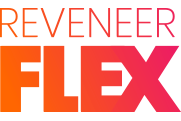Objections.
Every sales person gets them whether they’re expecting them are not. There are knee jerk reactions that no matter what industry you’re selling into you’ll hear:
“I don’t have time”
“Send me an email”
“I’m not interested”
“We don’t have budget”
“I don’t take sales calls”
“I’m not involved with that”
And of course: “We have a solution for that”
If you’re following the right process, your inclination is to figure out what they’re using:
“Great to hear you have a solution in place- I’m not surprised. What do you use?”
“We use Competitor X”
For a lot of sales people, hearing that a prospect is using a competitor usually steers the conversation into how you differentiate yourself from that competitor. This needs to be done with care.
Objections don’t have to be the end of the conversation. In fact, it’s the beginning of a whole new conversation with your prospect by using these steps:
Step 1: Embrace
Can you guess what the #1 complaint of sales people is? If you guessed being pushy, you’re close; that rings in at a close #2.
The #1 complaint of sales people is that they don’t listen.
Since active listening is one of the finer qualities of a good sales rep, you want to acknowledge and embrace your prospect’s objection:
“You’re using Competitor X? We come across them a lot in this space”
Step 2: Inform
Most companies have a good handle on their competitive landscape and, therefore, have ‘battlecards’ to use when running into a competitor
Your ‘inform’ needs to focus on the facts of what differentiates you from them, but in a respectful way. Saying flat out “We’re better than Competitor X because…” turns the conversation hostile very quickly and will end the conversation (trust me, I know from experience).
“You’re using Competitor X? We come across them a lot in this space. We do things a bit differently from them by recruiting and hiring reps as dedicated resources to your team, rather than pulling on shared resources”
See what I did there? I factually laid out the differences between what we do and what Competitor X does and left the prospect with a tidbit about how we do things differently. It comes across as more professional and also doesn’t insult the prospect’s intelligence for using a product or service that (hypothetically) isn’t the best out there.
Step 3: Question
Open-ended questions extend conversations and you want to end with one here, too. Depending on the objection, the question could drill down more into detail on Competitor X’s capabilities or it could steer the conversation in a different direction into a specific process that your product or service helps with:
“You’re using Competitor X? We come across them a lot in this space. We do things a bit differently them by recruiting and hiring reps as dedicated resources to your team, rather than pulling on shared resources. How has the performance been with these shared resources feeding opportunities into your pipeline?”
The embrace, inform, and question combination allows you to acknowledge what you heard, give a rebuttal to the objection, and continue the conversation with an open ended question all in one-fell-swoop that doesn’t leave the prospect with a bad taste in their mouth. This can be applied to all objections specific to your product, service, and/or target market, not just competition.



